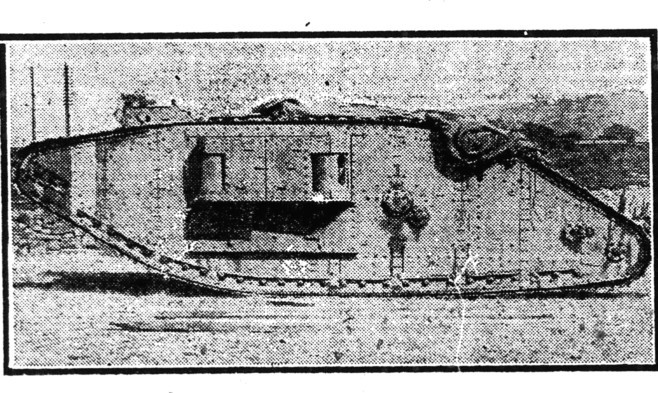Tracks squeaking and engines roaring, the metal warrior slowly made its way through Perth as morning broke.
The war machine was taken from Tay Street and left perched at Craigieknowes after a council battle over its final location.
There it would overlook the Fair City for almost a decade before being unceremoniously cut up for scrap.
Only two photos remain of Perth’s lost tank, a relic from the trenches of the First World War, which was gifted to the city at the end of the conflict.
Now historian Mike Taylor is appealing for anyone with photographs of the vehicle, which is thought to have been used in France, to contact him so he can learn more about the tank.
Mr Taylor, who is an officer with the Tayside branch of the Western Front Association, said it was impossible to identify the exact vehicle using existing images.
“There are only two known photographs of the tank,” he said. “Neither of them enable a detailed identification of it they don’t show a serial number, which would enable much more information to be discovered, such as where it was built. Both were also taken from the same side so it doesn’t show much in the way of detail.
“Any other photographs would be really helpful. People who had their photographs taken while they were playing on it as kids for example could show up more detail.”
Perth’s tank arrived in the city in 1919 as a thank you from the Scottish War Savings Committee in recognition of the area’s role in fundraising during the war.
Mr Taylor said: “The public during the First World War had this almost fanatical interest in tanks as war-winning weapons and the first ever photograph of a tank to be published cost the newspapers £5,000 probably more than a tank cost to build.”
During the war, the savings committee brought tanks to towns and cities across Scotland to drum up patriotic fervour.
The most famous of these was Julian, who made visits to Dundee.
At the end of the war he was gifted to Duns in Berwickshire, a community that raised £340 for each head of population.
Hundreds of tanks were given to towns and cities across Britain, but only one still remains at Ashford in Kent which was turned into an electricity sub-station.
The Perth tank was kept on Tay Street until it was taken to Craigieknowes in 1921.
“Some older residents of Perth might remember it being played on,” said Mr Taylor. “Children found access to it and there was letters in the paper complaining about the din of slamming tank doors.”
Mr Taylor added: “Scrapping the tank means it’s a loss to Perth’s First World War history, which is extremely poignant at the moment with the anniversary coming up.”
Anyone with photographs of the tank can contact Mr Taylor via The Courier on 01382 575862.
